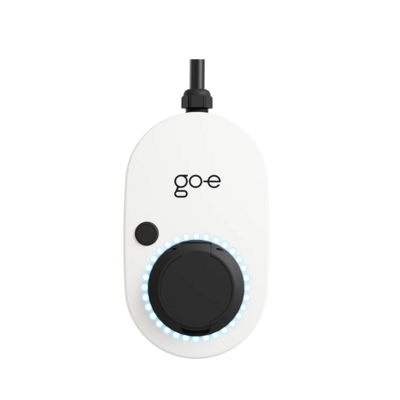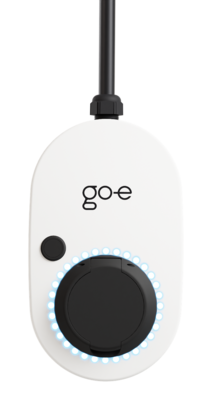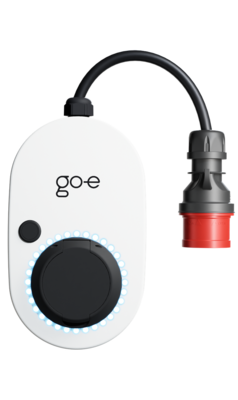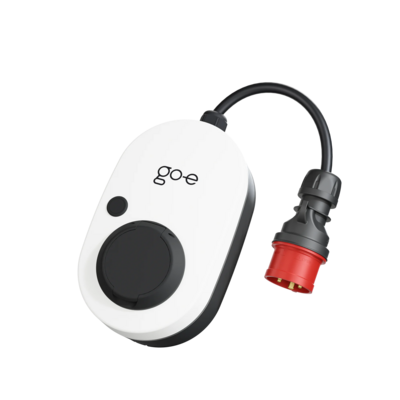Wallbox Price: How Much Does A Wallbox Cost?
Imagine you walk into a shop and ask about the costs of a wallbox. You will probably be asked back what kind of wallbox you want. Normally, manufacturers do not offer a bunch of identical products, right?
All wallboxes have lots of distinctions that define how much you have to pay for them. So, let’s start with finding those distinctions.
There Are Smart and There Are Simple Wallboxes
First of all, there are smart and simple wallboxes. The difference between them is tremendous.
What’s special about a smart charging station?
-
Can have load balancing features, i.e. the charging speed is automatically adjusted to the amount of energy available while charging two or more cars to ensure safe use.
-
Can have integrated OCPP which means several/many EV charging stations can be managed by a back-end system.
-
Can have the option to communicate with several other smart devices in a building via an open API like our go-e Chargers.
-
Offers the option to charge with PV surplus power.
-
You can schedule charging for the times when electricity is available at the lowest prices.
-
You can control the whole process via an app from your couch and change different settings yourself. Simple chargers cannot do most of it.
What does it mean for your charging?
Use a Smart Wallbox to Avoid Blackouts
Using a simple wallbox can result in a blackout. Smart wallboxes are not only designed purely for your comfort, but also to avoid blowing the fuse when charging your electric car.
Overloading a power grid is an easy thing to do if you have no control over the charging power. One moment the charging is going just fine; the next moment you start an oven or heat a sauna, the pressure on the grid goes up, and suddenly all the appliances in your house go off. Blackout. That’s something that can be easily solved with dynamic load balancing or the option that the charging power of your device could be adjusted by the electricity provider. The smart chargers consume only safe amount of energy.
What's The Price of Wallbox: Simple vs. Smart Wallbox?
How does the wallbox intelligence influence the price?
Significantly.
Right now, you can find simple chargers for around 300 €. But when you take a closer look, these are just boxes with a fixed charging speed and no advanced features. Unlike smart wallboxes that come with a higher price, but provide safe and convenient charging. The price for smart wallboxes starts at around 700 €. For instance, the wallboxes in our go-e Shop cost 689/699 € depending on the maximum charging rate.
You can also find wallboxes for 1300 € and more. When it comes to choosing a charging station for your electric vehicle, it's easy to get swept up in the allure of a higher price tag. But just because something costs more, doesn't mean it's necessarily the best option.
That's where our go-e Charger HOME+ comes in as it was selected as the best and cheapest wallbox by ADAC test.
go-e Charger Gemini 11 kW

The compact wallbox for stationary use, at home or at the workplace. Simple installation, intuitive operation and smart comfort functions. Charging power from 1.4 kW to 11 kW. 1-phase or 3-phase charging.
go-e Charger Gemini 22 kW

The compact wallbox for stationary use, at home or at the workplace. Simple installation, intuitive operation and smart comfort functions. Charging power from 1.4 kW to 22 kW. 1-phase or 3-phase charging.
go-e Charger Gemini flex 11 kW

The intelligent wallbox can be used both stationary in the wall bracket and mobile. No electrician is required for the installation of the charging station. Charging power from 1.4 kW to 11 kW. 1-phase or 3-phase charging.
go-e Charger Gemini flex 22 kW

The intelligent wallbox can be used both stationary in the wall bracket and mobile. No electrician is required for the installation of the charging station. Charging power from 1.4 kW to 22 kW. 1-phase or 3-phase charging.
The Price of a Mobile vs Stationary Wallbox
Private wallboxes differ in the way they are used. A stationary wallbox always remains at the same place as it is connected to your home power grid. Meanwhile, a mobile charging station can be easily unhooked from the wall and taken on a trip when visiting friends or spending a weekend camping. For instance, our go-e Charger Gemini is a stationary wallbox, while go-e Charger Gemini flex is mobile.
In most cases, both charger types should cost the same. For example, our go-e Charger Gemini and go-e Charger Gemini flex are equal in price. However, some manufacturers offer mobile wallboxes at a slightly higher cost.
Funding of wallbox users
All over the world, countries are encouraging people to switch to e-mobility. And as charging is part and parcel of driving an electric vehicle, they used to offer grants for purchasing a wallbox. Once you bought yourself a nice charger, you could get nearly all the money back.
At the moment, funds in some countries (e.g. Germany) have been exhausted and no such initiatives are available anymore. Some, however, still offer subsidies. We keep fingers crossed that the funding will be provided in more countries again in the future.
Wallbox 11 kW vs 22 kW: Price and Charging Speed Correlation
The higher the maximum charging speed of the wallbox, the higher the price. But the difference is hardly noticeable. Two popular charging speed limits are 11 kW and 22 kW. The price difference between them is normally from 10 € to 20 €.
So if the car you currently have cannot charge at 22 kW (e.g. Tesla Model 3), but you are planning to get one that will be capable of that speed (e.g. Renault ZOE), it’s better to buy a wallbox with a higher speed from the beginning.
Note: In some countries, wallboxes must be approved by the network operator, e.g. in Germany devices with a charging capacity of more than 11 kW.
There are also smart wallboxes with maximum charging rates of 3.6 kW and 7.4 kW. They could be used for the Mazda mx-30, for instance, which can charge at 6.6 kW the fastest. While smart low-speed wallboxes may be slightly less expensive, investing in a charger with a higher charging speed (e.g. 11 or 22 kW) may be a more future-oriented decision, as it will allow you to take advantage of faster charging speeds if you choose to upgrade to a new electric vehicle in the future.
How Much does it Cost to Install a Wallbox?
As you remember, we can divide wallboxes into stationary and mobile.
You don't need anyone to install a mobile charger. Plug it into a socket and the charging process begins. Zero installation costs.*
A stationary wallbox, on the other hand, should only be installed by an electrician. It needs to be connected to the power grid in your home, which requires a professional. Such a service costs between 200 and 600 euros. It is possible that your electricity network will need to be upgraded or that wall cut-outs will have to be made to lay cables. This will cost you a few hundred euros extra.
* In order to use a mobile charger, you will need to have access to a power outlet that is compatible with the charger's plug and that can provide the necessary voltage and amperage.
How Much Do You Pay for Wallbox as a Tenant?
If you own a house, you can simply find an electrician to install a home charging station. But what if you rent a place? Then it’s a little different. Before buying a wallbox, you need to ask your landlord for permission. Don't worry, you don't have to give an hour-long presentation to convince him/her that you can get a wallbox. The Austrian Home Ownership Act (WEG), for example, states that a landlord can only refuse your proposal for a good reason.
Requirements for installing a wallbox as a tenant may differ depending on your country. We suggest you enquire locally what permissions you need.
Summary
So, how much is a wallbox? The price depends on various factors. The main of them are:
-
Simple or smart
-
Maximum charging speed
-
Mobile or stationary
Remember that whichever wallbox you choose, charging your electric car at home with it will be much cheaper than doing it at public charging stations anyway.
